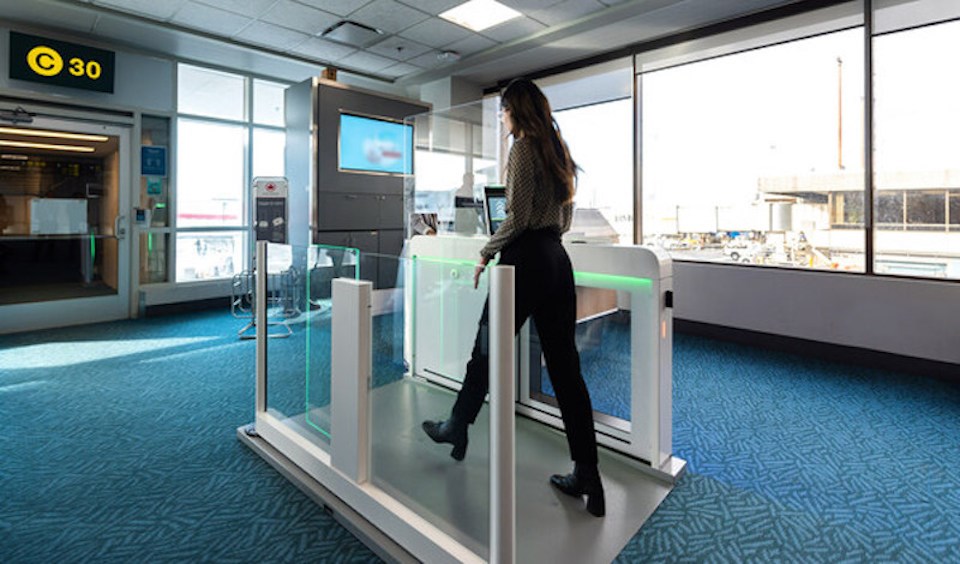If you aren't a fan of fumbling with paper tickets and identification at airport gates, you are not alone. But lengthy check-ins may be a thing of the past thanks to a new technology that helps streamline the process.
Air Canada has announced a new digital identification program that allows customers to confirm their identity via facial recognition technology.
The new technology is available to select travellers departing from Vancouver International Airport (YVR) on Air Canada flights to Winnipeg, and for eligible customers entering the Air Canada Café at Toronto Pearson International Airport (YYZ).
Mel Crocker, Air Canada’s Chief Information Officer, told V.I.A. that the new technology will make the boarding process quicker, more user-friendly, and more secure than other methods.
For now, only people who elect to use the technology will be part of the pilot program. And while it is not a requirement for any passengers, the company encourages people to use it.
"The more people that we can get doing it, we hope that it'll translate to faster boardings," Crocker explained, noting that eligible customers will be informed prior to their flights via email.
"People find it very easy to be able to use this...it makes it a great experience for them not having to dig out paperwork."
To build their digital identity, travellers scan their passports onto the Air Canada mobile app and then take a "selfie." Facial recognition via their phone's camera will take measurements of the person's face in both images, compare them, and authenticate that they are a match. A unique identifier is then created and stored on the phone along with their selfie and passport information.
The traveller's biometric data is immediately deleted after the app verifies the match.
How does Air Canada use the technology for Vancouver flights?
On the day of travel, travellers will be asked to give Air Canada permission to use the digital profile when they check in on the app. If they consent, the selfie in their profile is sent to a "day-of-travel" gallery and a faceprint is created.
Air Canada does not access the digital profile until the day of travel and keeps it in an encrypted form for 36 hours.
"It's very secure," Crocker said, noting that the technology goes even further than simply comparing the visual image.
"When you actually create the digital identity, it does a liveness check by sort of forcing you to move your phone around to get a variety of different views of your face," he explained, adding that it also assesses the user's temperature.
Air Canada personnel will also remain at the front of the gate during the boarding process, so a person couldn't hold up a photo of someone else and try to cheat the system.
While Air Canada is pioneering the use of facial recognition at Canadian airports, airlines around the world have been investing in biometric technology.
After going through the pilot period, the airline hopes the technology will be broadly adopted across airports in Canada at various checkpoints.
"Many of our customers already utilize digital credentials to simplify their daily activities such as unlocking mobile phones, entering workplaces, verifying identification during financial transactions, and more," Crocker said.
"We are very excited to now take a leadership position in Canada and test digital identification using facial recognition technology to validate customer identification quickly, securely, and accurately at select airport touchpoints."



